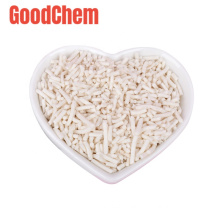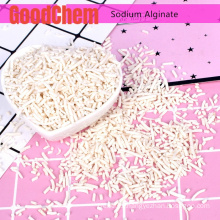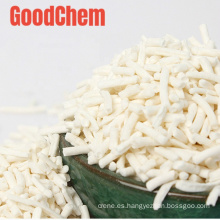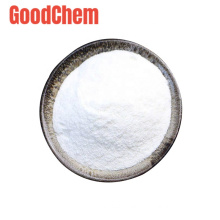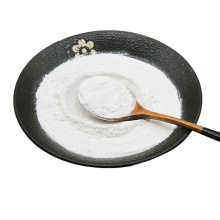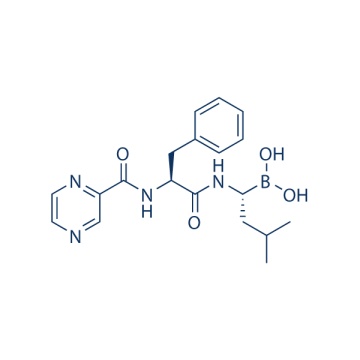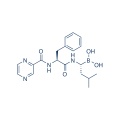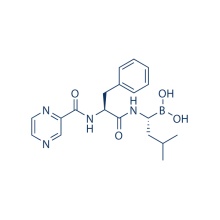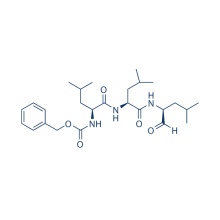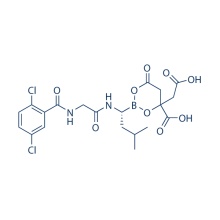.cp_wz tabla {borde superior: 1px sólido #ccc; borde izquierdo: 1px sólido #ccc; } .cp_wz table td {borde derecho: 1px sólido #ccc; borde inferior: 1px sólido #ccc; padding: 5px 0px 0px 5px;} .cp_wz table th {border-right: 1px solid #ccc; border-bottom: 1px solid #ccc; relleno: 5px 0px 0px 5px;} \ n Peso molecular: 348,48 TTNPB (ácido arotinoide) es un potente agonista de RAR e inhibe la unión de [3H] tRA con IC50 de 5,1 nM, 4,5 nM y 9,3 nM para RARα, β humanos y γ, respectivamente. \ n TTNPB se une a receptores nucleares de ácido retinoico con alta afinidad, inhibe la unión de [3H] tRA con IC50 de 3.8 nM, 4.0 nM y 4.5 nM para mRARα, β y γ, respectivamente. TTNPB aumenta la activación transcripcional de RAR de ratón en células JEG-3 después de 72 h usando medios acondicionados con CE50 de 2,0 nM, 1,1 nM y 0,8 nM para mRARα, β y γ, respectivamente. TTNPB inhibe el crecimiento de células epiteliales mamarias humanas normales (HMEC) y células de cáncer de mama con receptor de estrógeno positivo (ER positivo) al inducir el bloqueo del ciclo celular G1. TTNPB provoca una disminución dependiente de la concentración en la diferenciación de células ES-D3. \ n \ n Protocolo (solo como referencia) Ensayo de quinasa: [1]
|
Binding assays
|
Binding assays are performed as previously described (Allenby et al., 1993, 1994). Briefly, labeled and unlabeled retinoids are added to nucleosol or cytosolic fractions in ethanol so that the total amount of ethanol added is constant in all tubes and did not exceed 2% of the incubation volume. The receptor preparations are incubated with retinoids at 4°C for 4–6 hr. Sephadex PD-10 desalting columns are used to separate bound radioligand from free radioligand after equilib- rium is achieved. For competitive binding assays, varying concentrations of unlabeled competing ligand are incubated with the appropriate nucleosol or cytosol in the presence of a fixed concentration of [3H]tRA (sp. act. 49.3 Ci/mmol) or [3H]9-cis RA (sp. act. 24.0 Ci/mmol). Final concentrations of [3H] tRA and [3H]9-cis RA for nuclear receptor binding assays are 5nM. Final concentrations of [3H] tRA for CRABP binding assays is 30 nM. The IC50s are calculated as described above (DeLean et al., 1978). For saturation kinetics, increasing concentrations of radiolabeled ligand ([3H]tRA sp. act. 49.3 Ci/mmol, [3H]TTNPB sp. act. 5.5 Ci/ mmol) are added to the nucleosol of the appropriate receptor subtype in the presence (nonspecific binding) or absence (total binding) of a 100-fold molar excess of the corresponding unlabeled retinoid. Specific binding is defined as the total binding minus nonspecific binding. Saturation kinetics are calculated as previously described (Scatchard, 1949; Grippo and Gudas, 1987; Levin et al., 1992).
|
Ensayo celular: [3]
|
Cell lines
|
T47D cells and 184 cells
|
|
Concentrations
|
~1 μM
|
|
Incubation Time
|
8-12 days
|
|
Method
|
Human mammary epithelial cells are maintained in Mammary Epithelial Basal Medium (MEBM) supplemented with the Mammary Epithelial Growth Media (MEGM) bullet kit. 184 and 184B5 cells are maintained in MEBM sodium-bicarbonate free (MEBM-SBF) supplemented with the MEGM bullet kit, isoproterenol (10 μM), and transferrin (5 μg/ml). MCF10A cell lines are maintained in DME/F12 containing 5% heat inactivated horse serum, penicillin/streptomycin (100 μg/ml and 100 μg/ml), hydrocortisone (1.4μM), insulin (10 μg/ml), choleratoxin (100 ng/ml), and EGF (20 ng/ml). Breast cancer cell lines are maintained in Improved MEM Zinc Option containing 10% fetal bovine serum, 1% glutamine, and 1% penicillin/streptomycin. For growth assays, cells are treated with the different retinoids for the specified number of days with media and treatment changes every other day in T47D cells and every 2 days in 184 cells. Cell proliferation is measured according to the protocol for the CellTiter 96 Aqueous Non-Radioactive Cell Proliferation Assay. This colorimetric assay determines the number of viable cells in a sample. Each point represents samples done in quadruplicate.
|
Estudio con animales: [5]
|
Animal Models
|
Mouse models bearing hormone-sensitive (HS) and hormone-insensitive (HI) strains of the MXT murine mammary carcinoma.
|
|
Formulation
|
Saline
|
|
Dosages
|
~0.25 mg/kg
|
|
Administration
|
i.p.
|
Conversión de diferentes modelos de animales basados en BSA (valor basado en datos del Borrador de Directrices de la FDA)
|
Species
|
Baboon
|
Dog
|
Monkey
|
Rabbit
|
Guinea pig
|
Rat
|
Hamster
|
Mouse
|
|
Weight (kg)
|
12
|
10
|
3
|
1.8
|
0.4
|
0.15
|
0.08
|
0.02
|
|
Body Surface Area (m2)
|
0.6
|
0.5
|
0.24
|
0.15
|
0.05
|
0.025
|
0.02
|
0.007
|
|
Km factor
|
20
|
20
|
12
|
12
|
8
|
6
|
5
|
3
|
|
Animal A (mg/kg) = Animal B (mg/kg) multiplied by
|
Animal B Km
|
|
Animal A Km
|
Por ejemplo, para modificar la dosis de resveratrol utilizada para un ratón (22,4 mg / kg) a una dosis basada en el BSA para una rata, multiplique 22,4 mg / kg por el factor Km para un ratón y luego divida por el factor Km para una rata. Este cálculo da como resultado una dosis equivalente para ratas de resveratrol de 11,2 mg / kg.
|
Rat dose (mg/kg) = mouse dose (22.4 mg/kg) ×
|
mouse Km(3)
|
= 11.2 mg/kg
|
|
rat Km(6)
|
Información química
|
Molecular Weight (MW)
|
348.48
|
|
Formula
|
C24H28O2
|
|
CAS No.
|
71441-28-6
|
|
Storage
|
3 years -20℃Powder
|
|
6 months-80℃in solvent (DMSO, water, etc.)
|
|
Synonyms
|
Ro 13-7410,AGN-191183
|
|
Solubility (25°C) *
|
In vitro
|
DMSO
|
15 mg/mL
heating
(43.04 mM)
|
|
Water
|
<1 mg/mL
(
|
|
Ethanol
|
<1 mg/mL
(
|
|
|
Chemical Name
|
Benzoic acid, 4-[(1E)-2-(5,6,7,8-tetrahydro-5,5,8,8-tetramethyl-2-naphthalenyl)-1-propen-1-yl]-
|
orte
Grupos de Producto : Ubiquitina > Inhibidor del proteasoma
